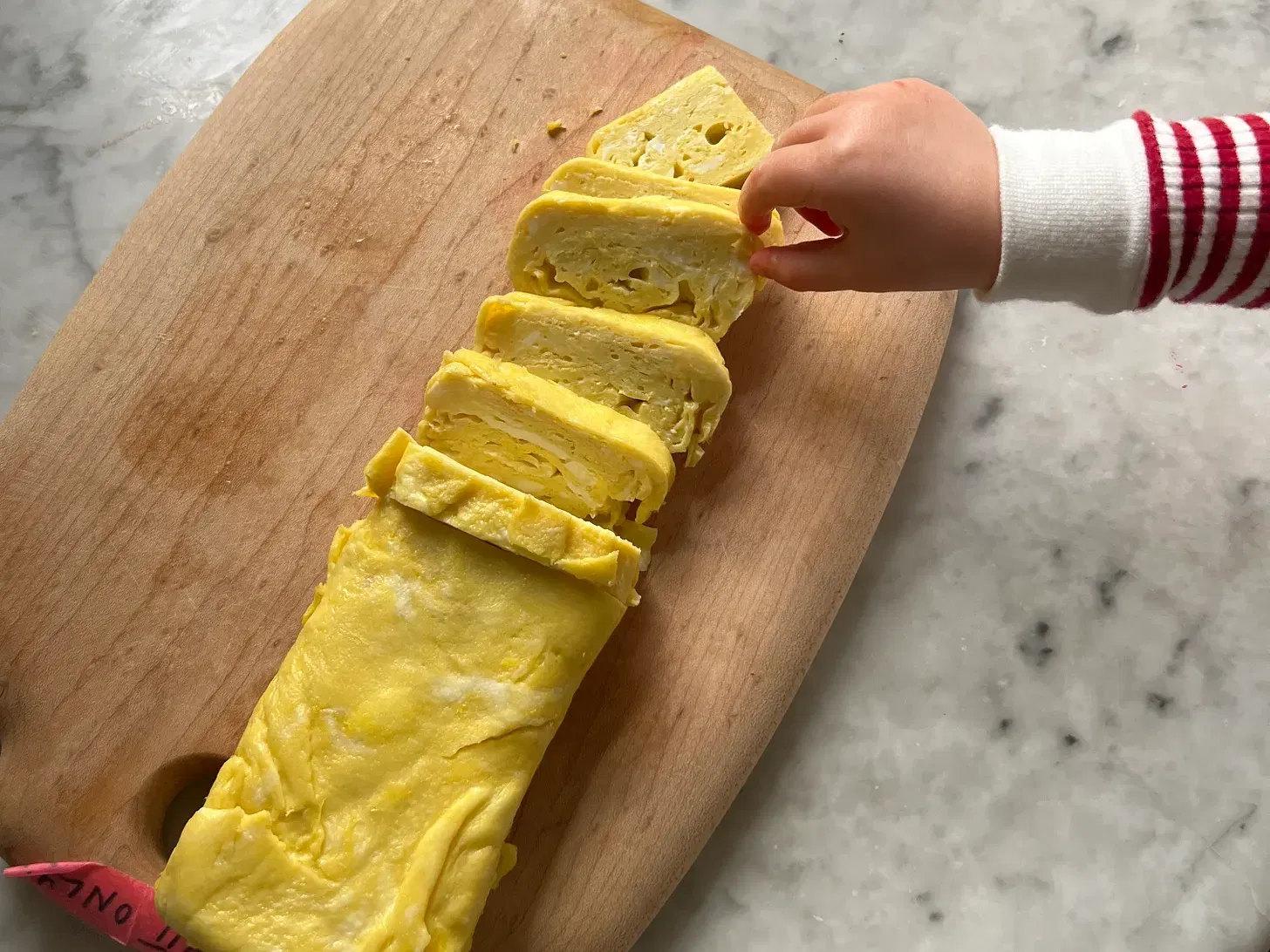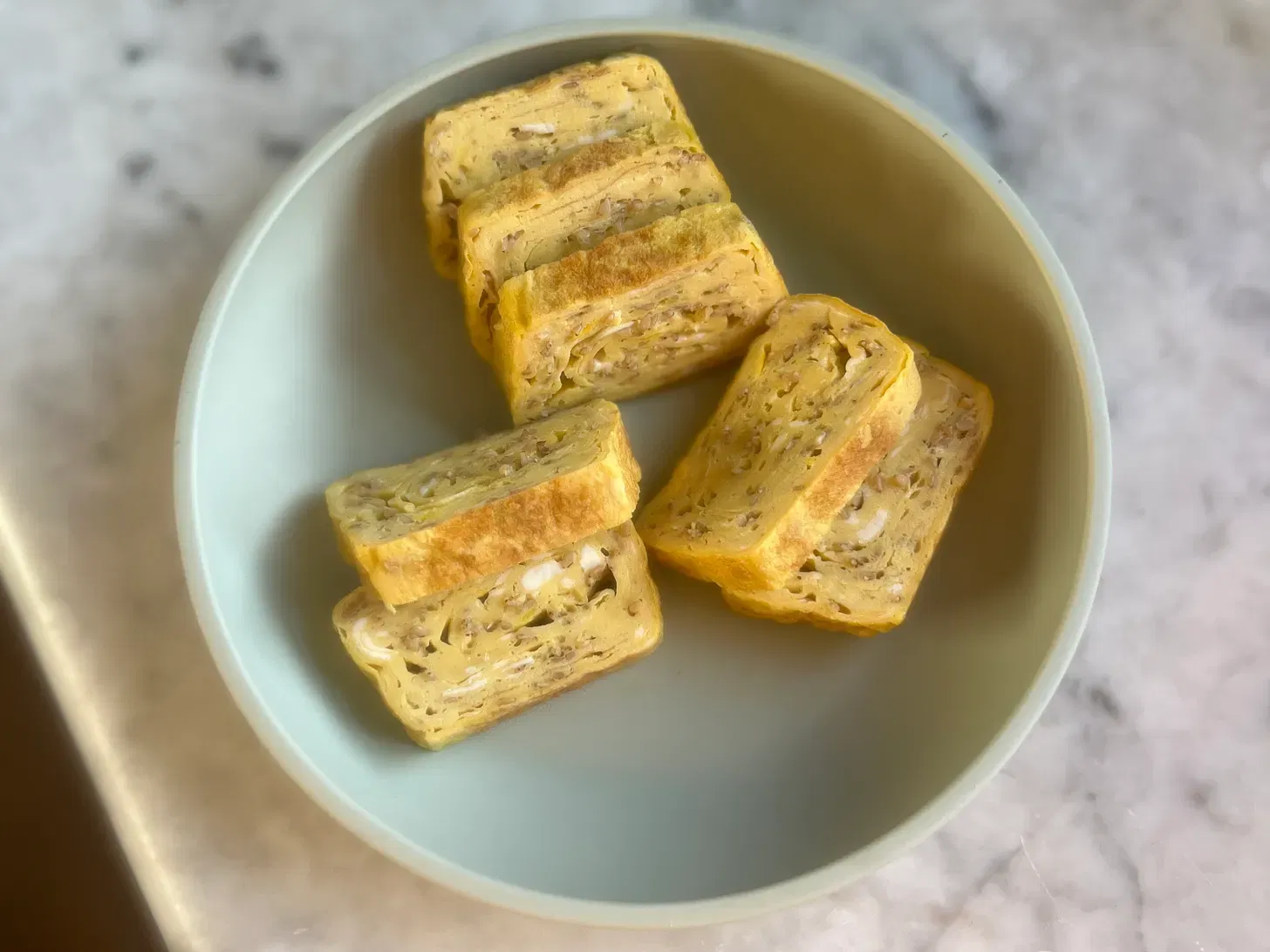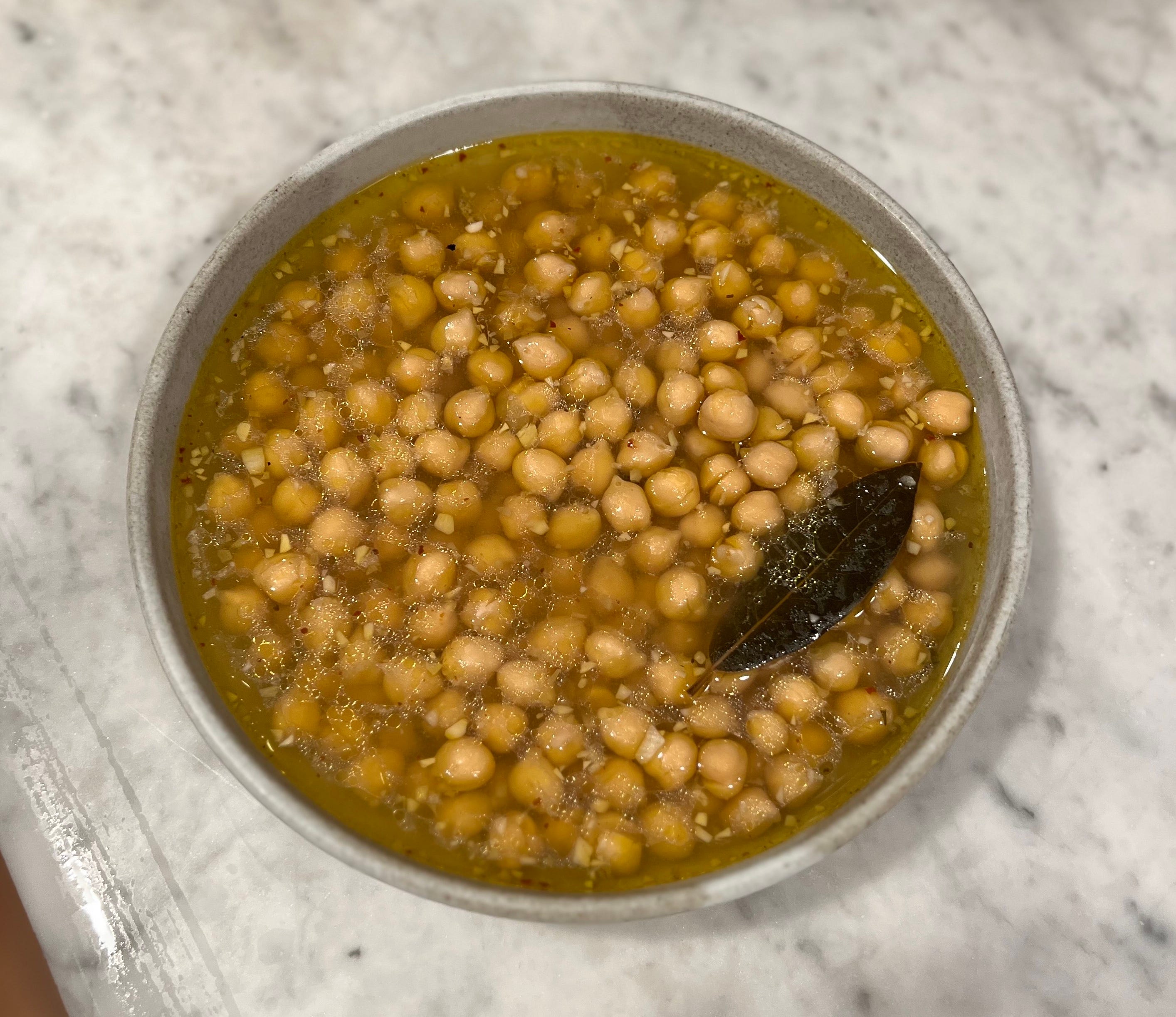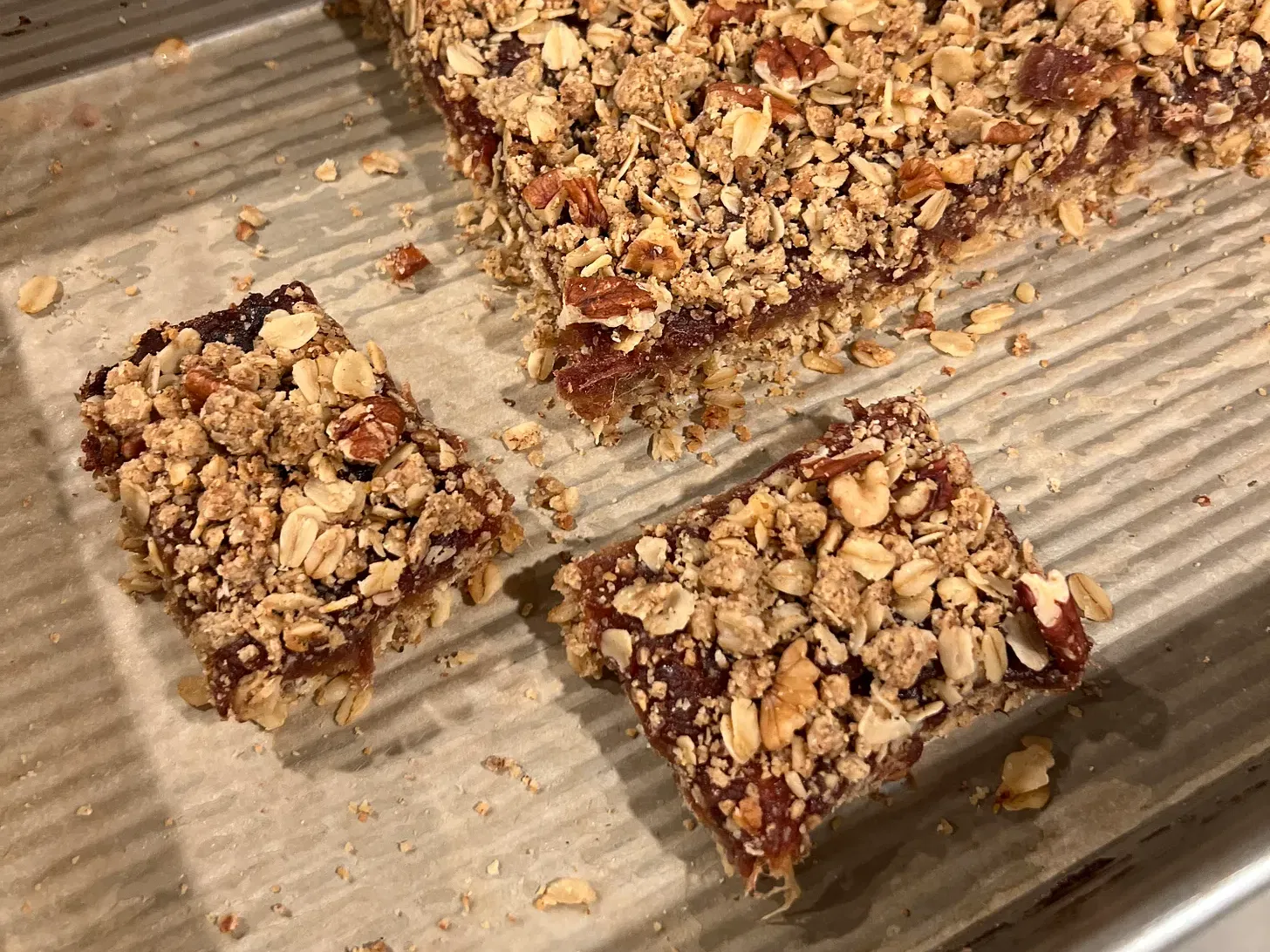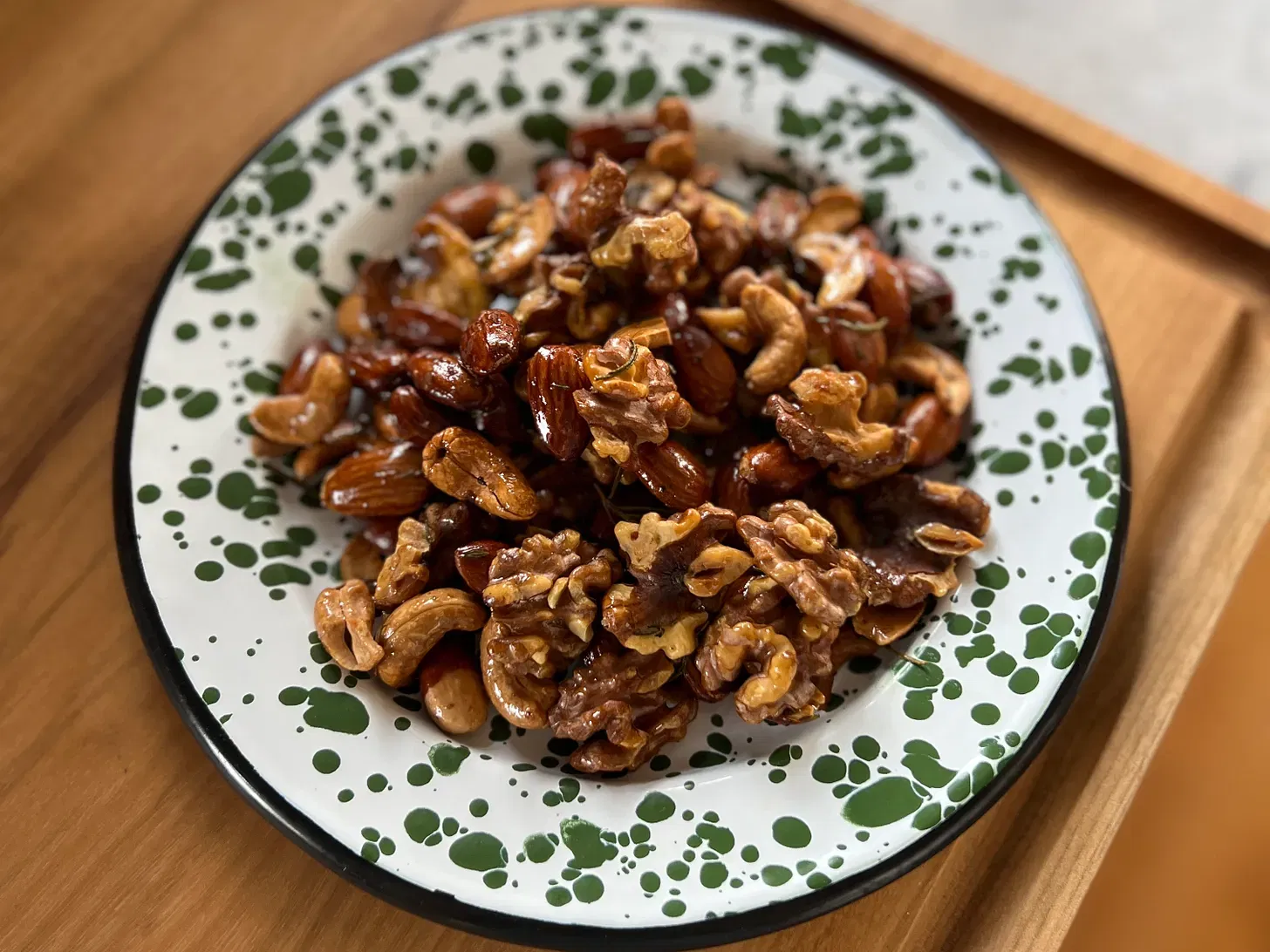Tamagoyaki (Japanese Omlet)
The Green Spoon•May 27, 2025
The addition of a hint of maple syrup in this recipe was not our innovation—Sonoko Sakai deserves all the credit for that. But it is a lovely way to sweeten the omelet without adding the more traditional sugar and mirin. Coconut amino acids also lend a bit of sweetness while simultaneously upping the umami quotient. Our version includes toasted sesame seeds too, which gives the omelet a wonderful texture and nuttiness—a true sweet and savory delight!
If you’re thinking about making this, we highly suggest you nab this pan. It’s slightly larger than some tamagoyaki-specific pans, but it’s very easy to use and it yields enough rolled omelet for 2–3 people, or multiple meals/snack times. If you’d like to try your luck on the stickiness front, or just prefer cast iron, this one’s for you. Once the omelet is cool, you can store it in an airtight container in the fridge for a day or two and serve it chilled.
View Substack Post

We’re Fanny and Greta, dear friends with deep backgrounds in sustainable food. This is a space for the food lovers, home cooks, would-be home cooks and anyone who needs a bit of inspiration and gentle guidance in their family kitchen.
Instructions
In a bowl, combine eggs (4–5), maple syrup (1 Tbsp), tamari/soy sauce (½ Tbsp), coconut amino acids (½ Tbsp) (if using) and sesame seeds (1–2 Tbsp). Whisk until very well combined.
Heat sesame oil (1 tsp) in a tamagoyaki pan over medium heat and use some paper towel to wipe out any excess oil. Reserve the towel to re-oil between layers of egg if you're encountering any stickiness.
Pour about ¼ cup of the egg mixture into the pan and quickly tilt the pan in all directions to distribute the egg in an even layer to the edges. If there are any exposed areas tilt to cover with more raw egg (or add a teaspoon from the bowl) to form an even layer.
After the layer is cooked, about 45 seconds, using a rubber spatula, gently lift the egg edges on the farthest side to loosen it. While tilting the pan up, carefully roll the egg toward yourself, fold over fold until you have a narrow, rectangular omelet all the way at the edge of the pan closest to you. Reduce the heat if the egg is getting too much color.
If necessary, lightly grease the exposed area of the pan with the oily paper towel. Pour another ¼ of the egg mixture into the pan and quickly tilt and swirl the pan to create another thin layer. Quickly, before the egg has fully solidified, use the spatula to gently lift up the folded omelet and tilt the pan toward you so the raw egg mixture runs under the omelet and adheres to it (essential!).
Once the layer is cooked, gently roll the omelet away from you until you reach the far side of the pan. Once you have a slender "log" of omelet, pull it back to the side closest to you, using your spatula to slightly pat it down and square it off in the squared edge of the pan. Repeat Steps 5 & 6 with the remaining egg mixture, greasing the pan before each additional layer, if necessary.
When you've used all the egg mixture and you have a nice uniform omelet, allow it to continue to cook for a moment in the pan off the heat. Transfer the omelet to a cutting board or a plate and cut crosswise into ½-inch slices. Serve immediately or chill for later.


